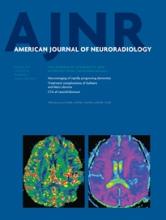Research ArticleNeurointervention
Endovascular Treatment of Middle Cerebral Artery Aneurysms with Flow Modification with the Use of the Pipeline Embolization Device
K. Yavuz, S. Geyik, I. Saatci and H.S. Cekirge
American Journal of Neuroradiology March 2014, 35 (3) 529-535; DOI: https://doi.org/10.3174/ajnr.A3692
K. Yavuz
aFrom the Department of Radiology, Hacettepe University Hospitals, Ankara, Turkey.
S. Geyik
aFrom the Department of Radiology, Hacettepe University Hospitals, Ankara, Turkey.
I. Saatci
aFrom the Department of Radiology, Hacettepe University Hospitals, Ankara, Turkey.
H.S. Cekirge
aFrom the Department of Radiology, Hacettepe University Hospitals, Ankara, Turkey.

Submit a Response to This Article
Jump to comment:
No eLetters have been published for this article.
In this issue
American Journal of Neuroradiology
Vol. 35, Issue 3
1 Mar 2014
Advertisement
K. Yavuz, S. Geyik, I. Saatci, H.S. Cekirge
Endovascular Treatment of Middle Cerebral Artery Aneurysms with Flow Modification with the Use of the Pipeline Embolization Device
American Journal of Neuroradiology Mar 2014, 35 (3) 529-535; DOI: 10.3174/ajnr.A3692
Jump to section
Related Articles
Cited By...
- Hemodynamic analysis of optimal branch selection for flow-diverting stents in middle cerebral artery bifurcation aneurysms: a pilot study
- Flow diversion for the treatment of intracranial bifurcation aneurysms: a systematic review and meta-analysis
- Comprehensive Analysis of Post-Pipeline Endothelialization and Remodeling
- Predictors of In-Stent Stenosis Following the Implantation of Pipeline Embolization Devices for the Treatment of Aneurysms Located at or beyond the Circle of Willis in the Anterior Circulation
- Flow diversion for basilar quadrifurcation aneurysms
- Magnetic resonance perfusion imaging findings following flow diversion in patients with complex middle cerebral artery bifurcation aneurysms: a single-center analysis regarding the jailed cortical branches
- Flow diversion for basilar quadrifurcation aneurysms
- Prospective study on embolization of intracranial aneurysms with the pipeline device (PREMIER study): 3-year results with the application of a flow diverter specific occlusion classification
- Evaluation of a novel flow diverter, the DiVeRt system, in an animal model
- Aspirin monotherapy in the treatment of distal intracranial aneurysms with a surface modified flow diverter: a pilot study
- Outcome of intracranial flow diversion according to the antiplatelet regimen used: a systematic review and meta-analysis
- Treatment of Unruptured Distal Anterior Circulation Aneurysms with Flow-Diverter Stents: A Meta-Analysis
- The Role of Hemodynamics in Intracranial Bifurcation Arteries after Aneurysm Treatment with Flow-Diverter Stents
- Two-Center Experience in the Endovascular Treatment of Ruptured and Unruptured Intracranial Aneurysms Using the WEB Device: A Retrospective Analysis
- Treatment of Middle Cerebral Artery Aneurysms with Flow-Diverter Stents: A Systematic Review and Meta-Analysis
- An outcomes-based grading scale for the evaluation of cerebral aneurysms treated with flow diversion
- Flow diversion of bifurcation aneurysms is more effective when the jailed branch is occluded: an experimental study in a novel canine model
- Use of flow diverters in the treatment of unruptured saccular aneurysms of the anterior cerebral artery
- Middle Cerebral Artery Bifurcation Aneurysms Treated by Extrasaccular Flow Diverters: Midterm Angiographic Evolution and Clinical Outcome
- Intra-DIC (distal intracranial catheter) deployment of the Pipeline embolization device: a novel rescue strategy for failed device expansion
- Flow diversion treatment of complex bifurcation aneurysms beyond the circle of Willis: a single-center series with special emphasis on covered cortical branches and perforating arteries
- Flow diverter device for the treatment of small middle cerebral artery aneurysms
- Flow diversion of large internal carotid artery aneurysms with the surpass device: impressions and technical nuance from the initial North American experience
- Y-stent assisted coiling of bifurcation aneurysms with Enterprise stent: long-term follow-up
- Reply:
- Flow-Diverter Stents for the Treatment of Saccular Middle Cerebral Artery Bifurcation Aneurysms
- A New Aneurysm Occlusion Classification after the Impact of Flow Modification
- Pipeline endovascular device for the treatment of intracranial aneurysms at the level of the circle of Willis and beyond: multicenter experience
- Long-Term Follow-Up Results following Elective Treatment of Unruptured Intracranial Aneurysms with the Pipeline Embolization Device
- Flow diverter stents for unruptured saccular anterior circulation perforating artery aneurysms: safety, efficacy, and short-term follow-up
- pCONus Device for the Endovascular Treatment of Wide-Neck Middle Cerebral Artery Aneurysms
- Small Pipes: Preliminary Experience with 3-mm or Smaller Pipeline Flow-Diverting Stents for Aneurysm Repair prior to Regulatory Approval
- Modifying Flow in the ICA Bifurcation: Pipeline Deployment from the Supraclinoid ICA Extending into the M1 Segment--Clinical and Anatomic Results
- Endovascular Treatment of Internal Carotid Artery Bifurcation Aneurysms: A Single-Center Experience and a Systematic Review and Meta-Analysis
- A Single Pipeline Embolization Device is Sufficient for Treatment of Intracranial Aneurysms
This article has not yet been cited by articles in journals that are participating in Crossref Cited-by Linking.
More in this TOC Section
Similar Articles
Advertisement











